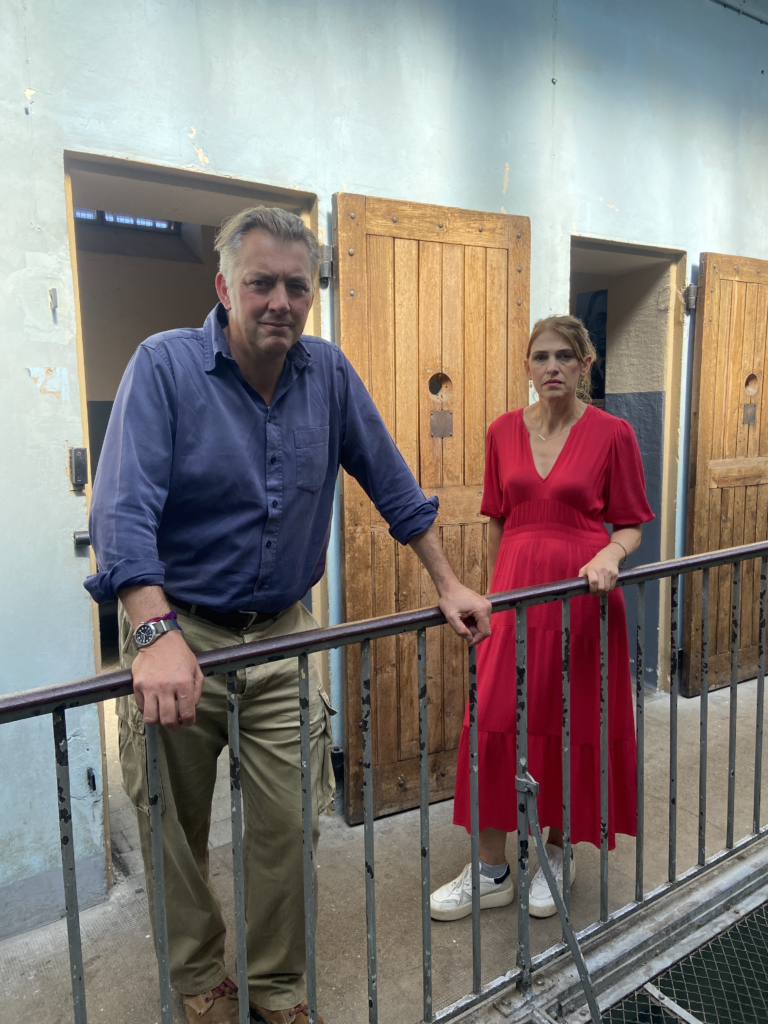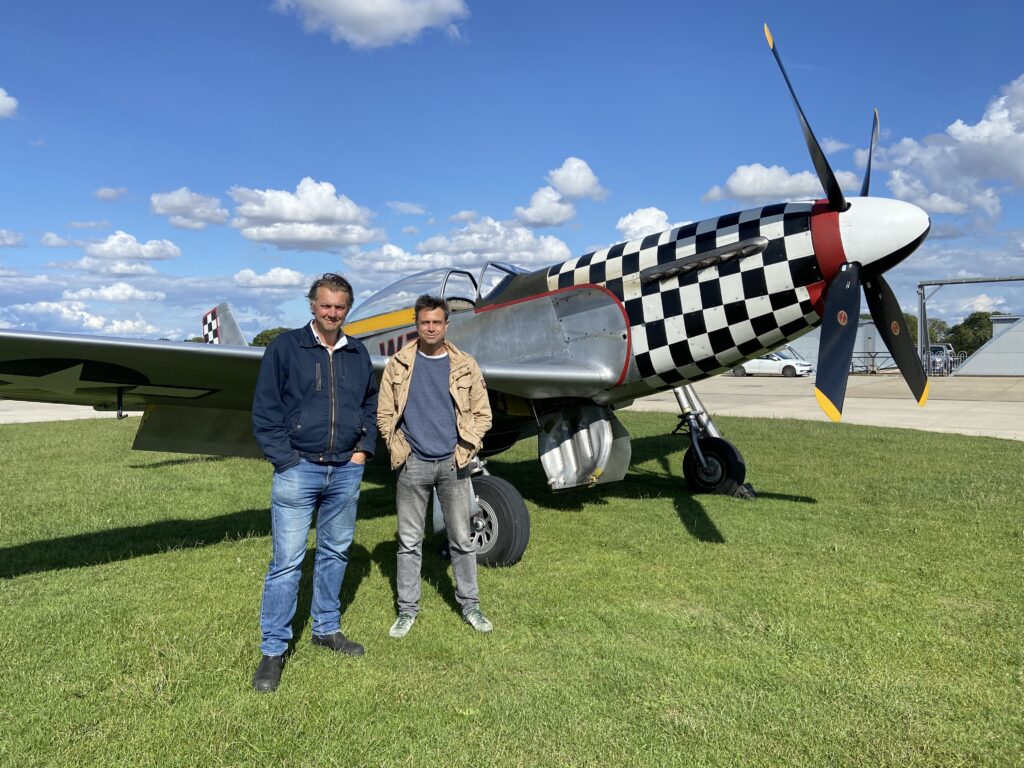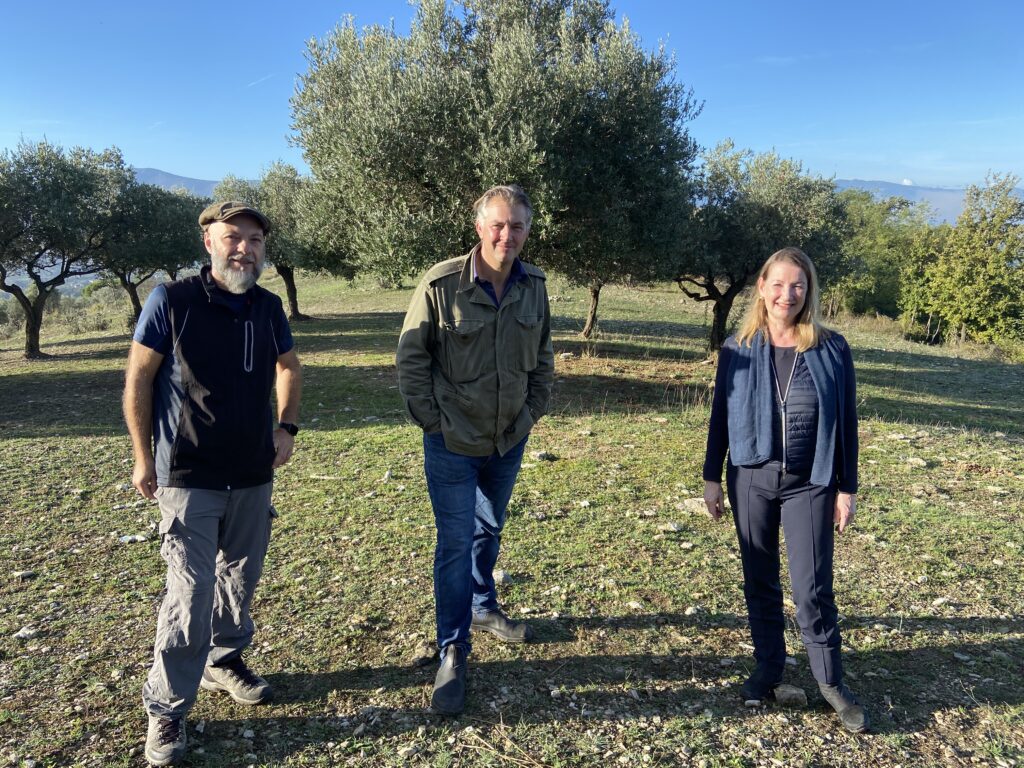4 x 46, BossaNova Originals (2024)
Internationally renowned historian and broadcaster, James Holland, takes a deep dive into key events from the Second World War, bringing incredible stories to life for a new generation, and offering new research and analysis to enhance our understanding of the most consequential war of the 20th Century.
Each episode follows Holland buddying up with a fellow expert companion to explore the locations, characters and hardware that bring each story to life. Holland and his guests travel to Lyon to learn about the downfall of the French Resistance leader, Jean Moulin; to Rauray to follow an epic tank battle; to Monte Cassino in the footsteps of the incredible Polish forces, and across the UK to explore how the development of a single aircraft contributed to making possible the D-Day landings.
On location, we get a sense of how each story played out, alongside Holland’s re-telling, and the interpretation of its importance and impact as he analyses each event with his companion, illustrated with archive imagery, records and animated sequences.
EPISODES
TIGER vs. SHERMAN: TANK ACTION AT RAURAY
Rauray, Normandy, 1944: the commander of the British Sherwood Rangers Yeomanry, John Semken, was turning his Sherman tank into Rue Mathieu, just as a German Tiger tank turned the corner at the far end. Only 110 metres separated them. Incredibly, the monstrous Tiger was knocked out by John Semken’s Sherman. James Holland and his expert companion, Stephen Prince, reveal why this was not just an extraordinary encounter between competing armour, but provided clues as to why the Allies were winning. In comparing Tigers vs Shermans, we are vastly restricting our ability to analyse the events that took place – and their wider meaning. The pair also seek local insight from historian and battlefield guide, Paul Woodadge. The tank battle was a tiny episode in a vast battlefield: but, for anyone who wants to understand what a small Allied victory can tell us about the methods adopted by both sides during the war, they were hugely significant. Understand this, and it becomes very clear why the Allies won the war.
WHO BETRAYED JEAN MOULIN?

Lyon, France, 1943. In an unassuming house in a quiet street, factional leaders of the French Resistance arranged to meet in secret, in a room above a doctor’s surgery. Ten minutes after the meeting had started, the Gestapo stormed the building and rounded up everybody inside. They did not know it immediately, but the Germans had caught the biggest fish of them all: Jean Moulin, the leader of the Resistance. He is eventually given up, and brutally tortured to death. James Holland is on the ground with historian, Clare Mulley, where they follow the trail of Moulin’s activity leading up to his arrest, imprisonment, and ultimate demise. They visit key sites such as the doctor’s house, Mont Luc prison, and the Traboules; a network of secret passageways used by resistors to avoid detection. It is likely more than luck that the Gestapo were able to catch so many resistance leaders in a single swoop. So, who knew that the meeting was taking place? Who had the most to gain breaking up the organised resistance? And the big question, that remains the topic of fierce debate to this day: Who betrayed Jean Moulin?
THE MUSTANG P51B: THIRTY TO ONE

January 1944, high above snow-shrouded northwest Europe, an extraordinary air battle was taking place. James Holland and his companion, historian Rowland White, explore what this largely forgotten engagement can tell us about the wider strategic air battle over Europe, about the men that fought it, and the machines they were using. Thanks to the advent of the P-51 Mustangs, Operation POINTBLANK was underway: the destruction of the Luftwaffe as an effective force in the west. This major operation was only made possible by the fighter escorts flying these new planes, and one fighter pilot in particular, Major Jim Howard, was about to make history by had single-handedly taking on the Luftwaffe at a ratio of Thirty to One without losing a single bomber from the stack he was protecting. This is the story of how a number of elements came together to bring skilled pilots and cutting-edge design together to achieve such remarkable results.
THE POLES AT MONTE CASSINO

May, 1944. This is the story of the Polish fighting force and their unlikely four-year journey to the frontline in Italy from the Siberian gulags, and via much of the middle east and North Africa. The start of the Second World War is famous for the imagery of German forces pouring into Poland from the west in early September 1939. By the middle of that month, the country was also invaded from the east by the Soviet Union. In just a few weeks Poland had been effectively wiped off the map, with millions of people displaced, and many now taken prisoner by either the Nazis or the Soviets. Many were liberated following the Battle of Barbarossa in 1941, where they then made a 2,000-mile journey south, largely on foot, to re-join the Allied war effort. In Monte Cassino, south of Rome, James Holland is on the ground with historian Alexandra Richie. When the Poles finally arrived at the Gustav Line in 1944, they were thrown into one of the bloodiest theatres of the war. As their first action, the Poles were given the objective of trying to take a position at Monte Cassino that had proven unsuccessful to everybody else across the previous four months of fighting. Could they succeed in the name of their homeland?
CREDITS
Written and Presented by
JAMES HOLLAND
Director and Editor
AARON YOUNG
Producer
FREYA EDEN-ELLIS
Executive Producers
MARTIN DAVIDSON
AARON YOUNG
JAMES HOLLAND
FREYA EDEN-ELLIS
RICHARD LAKE
Executive Producer for BossaNova Media
PAUL HEANEY
Guests
STEPHEN PRINCE
CLARE MULLEY
ROWLAND WHITE
ALEXANDRA RICHIE
With
PAUL WOODADGE
DAMIANO PARRAVANO
Camera
GEORGE LAYCOCK
Sound
STUART WAREING
KEITH BRANCH
Music
NEIL CARTWRIGHT
Maps
OWEN POWELL
ZOE BARNISH
Graphics and Animation
ZOE BARNISH
Illustrations
KEITH BURNS
Edit Assistant
JOSHUA FLETCHER
Production Researcher
ELLA MARSH
Archive Producer
MELODY KENNETT
Archive
CRITICAL PAST
FOOTAGE FARM
GETTY IMAGES
JAMES HOLLAND
NARA
Distributed Worldwide by
BOSSANOVA MEDIA
© 2024 Bright Button Productions Ltd.
